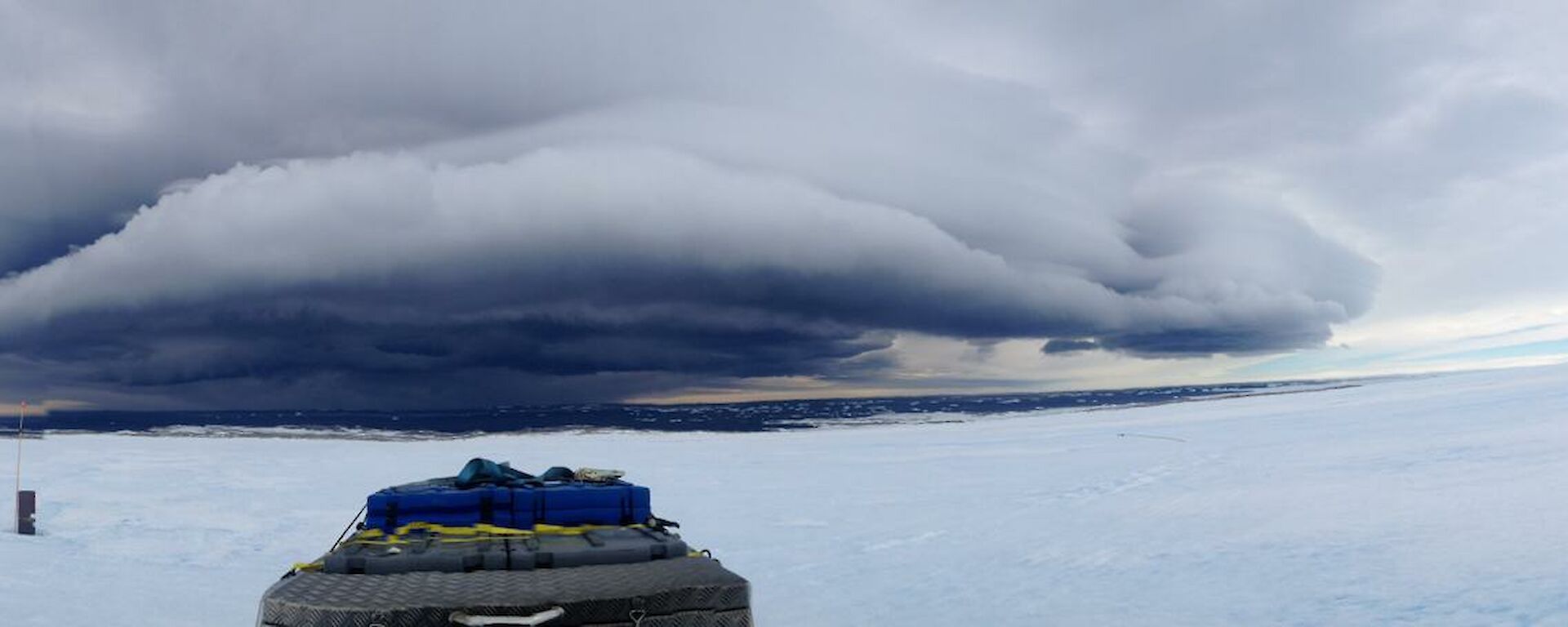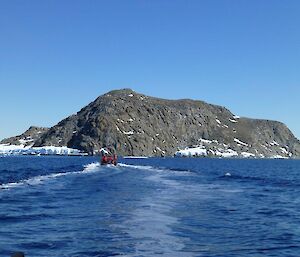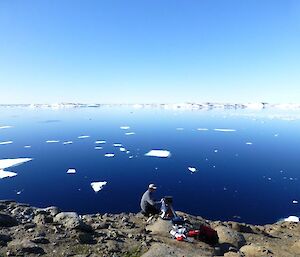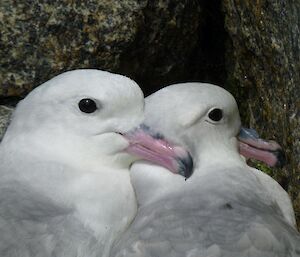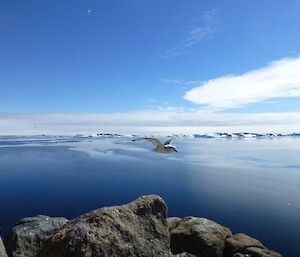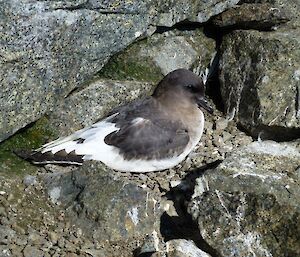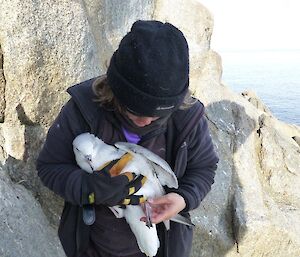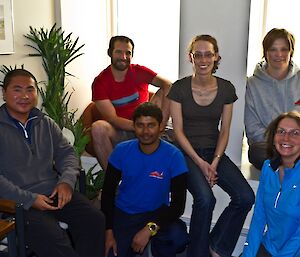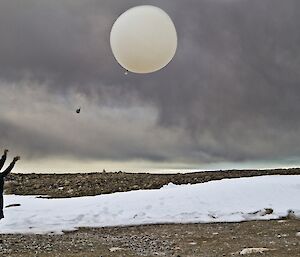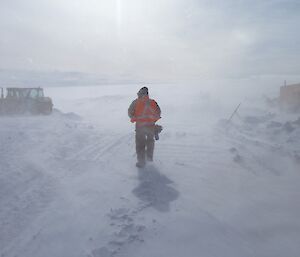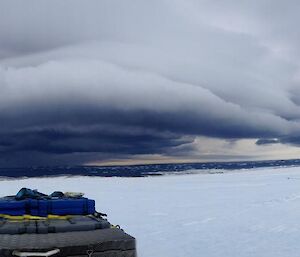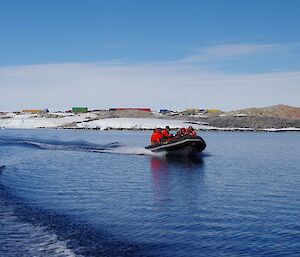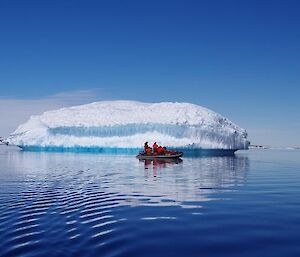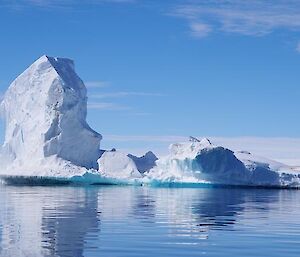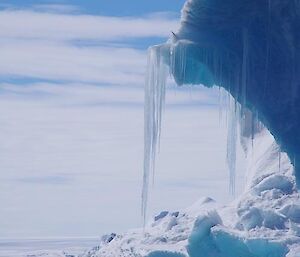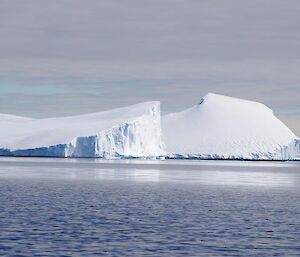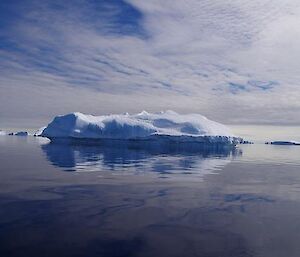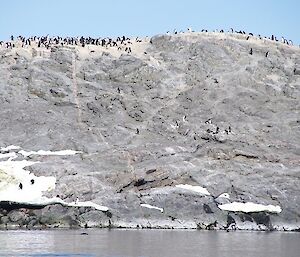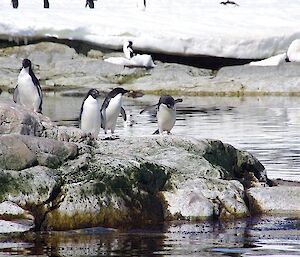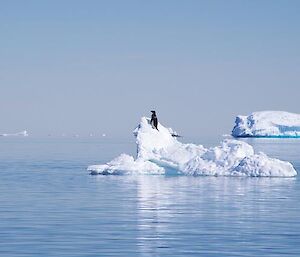The seabird researchers took time out from studying Adélie penguins for a trip to Ardery Island for research on flying seabirds. The island is a small rocky island with a diverse range of flying seabirds nesting mostly on the steep cliffs including southern fulmars, cape, Antarctic, snow and Wilson’s storm petrels and south polar skuas. The team mapped the boundaries of the southern fulmar and cape petrel populations, searched for banded birds, collected seabird scats, checked and maintained the seabird cameras and found tissue samples for genetics studies. Some of the banded southern fulmars that they resighted were at least 30 years old.
The weather was close to perfect and the wildlife abundant. In the late evening sun, the team had close views of a pod of orcas and some minke whales. All the while the space was filled with persistent calls from the seabirds flying overhead and nesting in the most precarious places. The aerial display certainly helped with the collection of fresh seabird scats! The curious Adélie penguins breeding on a neighbouring island came to visit and looked surprised to find a camp with scientists but no other penguins.
Setting up camp on Ardery Island is a big task and the team are very grateful for the enormous help they received to make the two trips so very successful. Thank you all.
This week at Casey: 18 January 2013
Ardery Island flying seabird research
Weather
The Bureau of Meteorology provide several staff members to support Australian Antarctic science and operations every year, with meteorological observing staff in place all year round and weather forecasters working the summer seasons.
At Casey this winter there will be two observers who make regular weather observations and release weather balloons twice per day. The balloons carry instrumentation for measuring winds, temperature and relative humidity as they ascend through the atmosphere. The third wintering team member is a meteorological technician who looks after a vast array of instrumentation, from the numerous automatic weather stations to the satellite imagery receiver. Currently joining the winterers are an additional weather observer and two weather forecasters. The forecasters provide daily weather information to all on station.
Balloon releases
Weather balloons are released at 2300 UTC (Universal Coordinated Time) and 1100 UTC everyday by the weather observers. The balloons are inflated with hydrogen gas in which we can achieve a controlled ascent rate of 300 metres per minute by adding a known amount of gas.
The 2300 UTC balloon is released alongside 170 other weather stations around the world as part of the World Meteorological Organisation (WMO) Global Upper Air Network (GUAN), used to analyse current weather conditions through global climate models and weather forecasting. Unfortunately 2300 UTC is 10am Casey station time, which is when morning tea is served, meaning more than often the poor weather observer misses the delicious food the station chefs prepare.
Weather and safety
The weather determines much of what can and can’t happen on a daily basis. Extreme winds, low temperatures and snowfall can disrupt any outdoor operation - from crane work for building the new east wing to whether the aeroplanes can fly for transport or science projects, to whether boats can be taken out on the water. A forecast is produced every day and weather briefings take place for pilots each morning. Everyone is prepared to adapt and rearrange work schedules as the weather dictates.
High winds and blizzards are the main ongoing safety concern for all. When wind speeds are greater than 15 knots boating operations cease and at around 35 knots (gale force winds) aviation operations are affected both for take off and landings as well as moving around on the ski-way. At 60 knots it becomes difficult to walk and so extra caution is required for moving between buildings, such as using blizzard or ‘blizz' lines (which are guide ropes between buildings) and only going outside accompanied by another expeditioner and carrying a radio. High winds can also cause snow on the ground to be blown around which can very quickly reduce visibility and produce blizzards. When blizzards occur they suspend all outdoor activities and forecasting those conditions is one of the most important jobs for the weather forecasters.
The weather and climate at Casey
It is January at Casey station, average daytime temperatures reach 2° Celsius with night time minima around −3° Celsius, but in the depths of winter the range is −10° to −18° Celsius. The lowest temperature recorded at Casey was −37° Celsius in August 2005. The wind speed is the most important feature of the weather day to day and windy days a frequent occurrence with gale force being reached on between 100 and 150 days per year. The highest wind gusts have been recorded at 130 knots. Wind chill can significantly modify the apparent temperature as well as high winds being a hazard in their own right.
Casey is at sea level and at the foot of Law Dome, which rises to 1400 metres, 120 kilometres southeast of the station. Law Dome has a significant effect on the climate of Casey. The predominantly easterly flow around the Antarctic coast is often strong as in this region frequent cyclonic storms occur. Easterly winds over Law Dome lead to a rain (snow) shadow on the lee side where Casey is positioned. Winds are often light at the station, especially in summer, but Law Dome can - when easterly winds are already storm force - increase the wind speed further. Such a day of extreme easterly winds occurred on 15th November 2012, just a fortnight after the summer expeditioners arrived, when the anemometer recorded 97 knots before being ripped from the top of the mast just before midnight. A spare was put in as replacement once the winds had died down 36 hours later.Boating
There can surely be no better way to spend a few hours on a Sunday than exploring the surrounds of Casey by boat. This was the case for a lucky bunch of us, who shook off the belated Christmas tinsel and jumped into immersion suits for a breathtaking ride in the IRBs (inflatable rubber boats). Light winds, gorgeous sun and some highly decorative altocumulus welcomed us into the glittering Newcomb Bay, from which we headed north to marvel at the icebergs in the Swain Island neighbourhood.
Next was a leisurely crawl past the penguin colonies, where the sports mode on our cameras got a work out, as we tried (mostly unsuccessfully on my behalf) to capture the flying antics of the swimming locals.
This was one of those magical moments when you are reminded how special this place is and how priviledged we are to be here.

